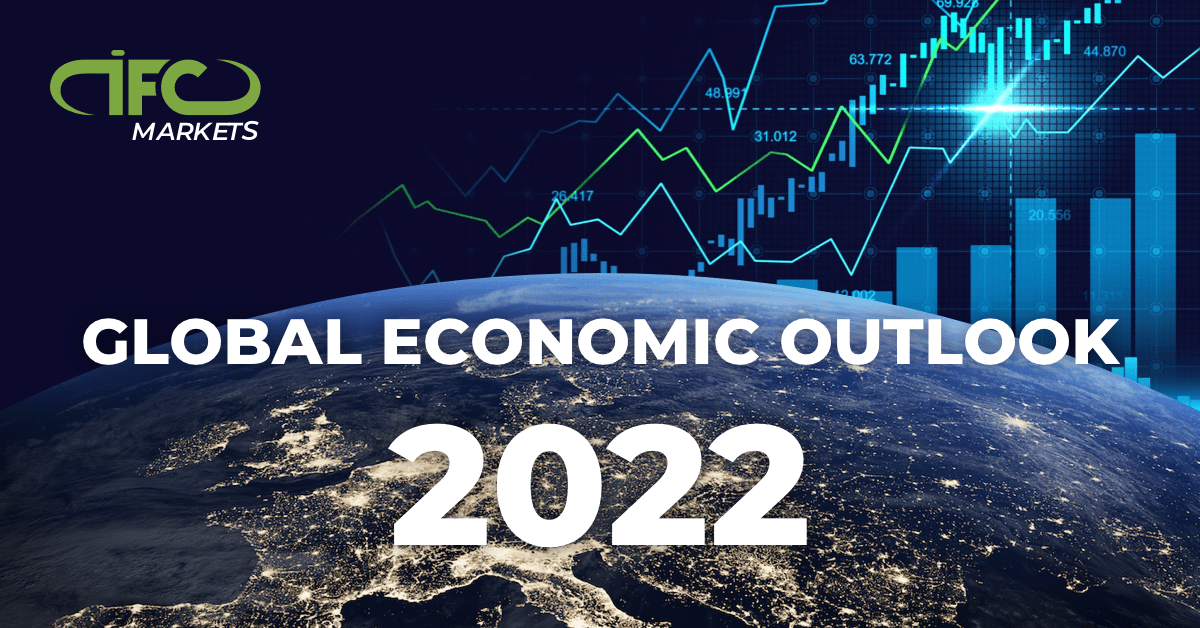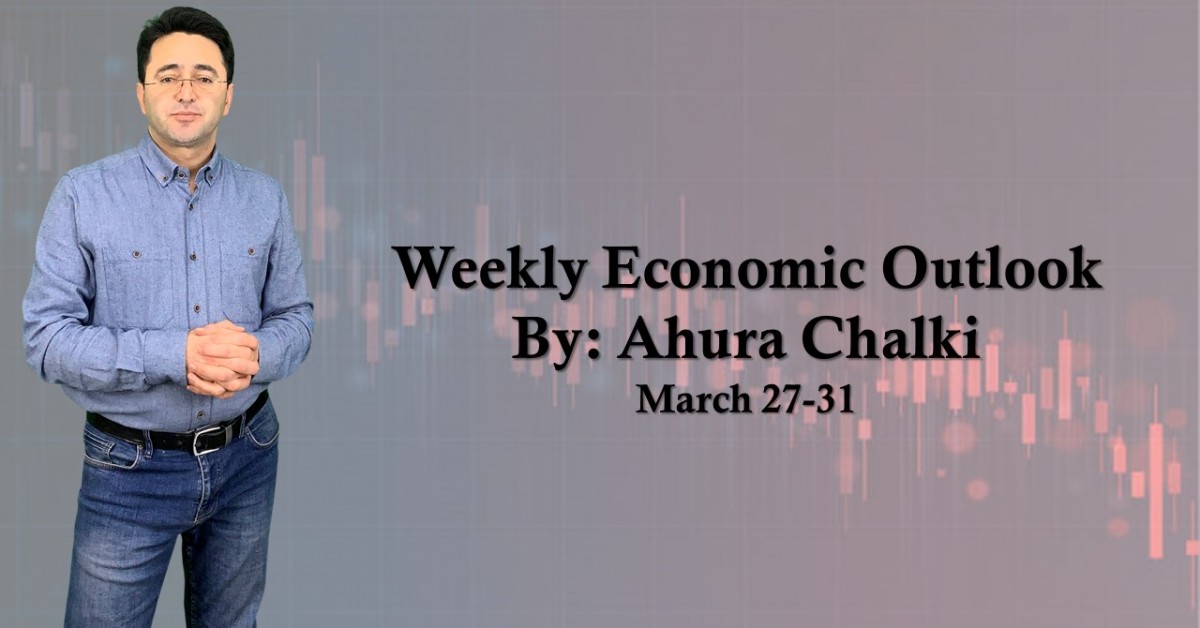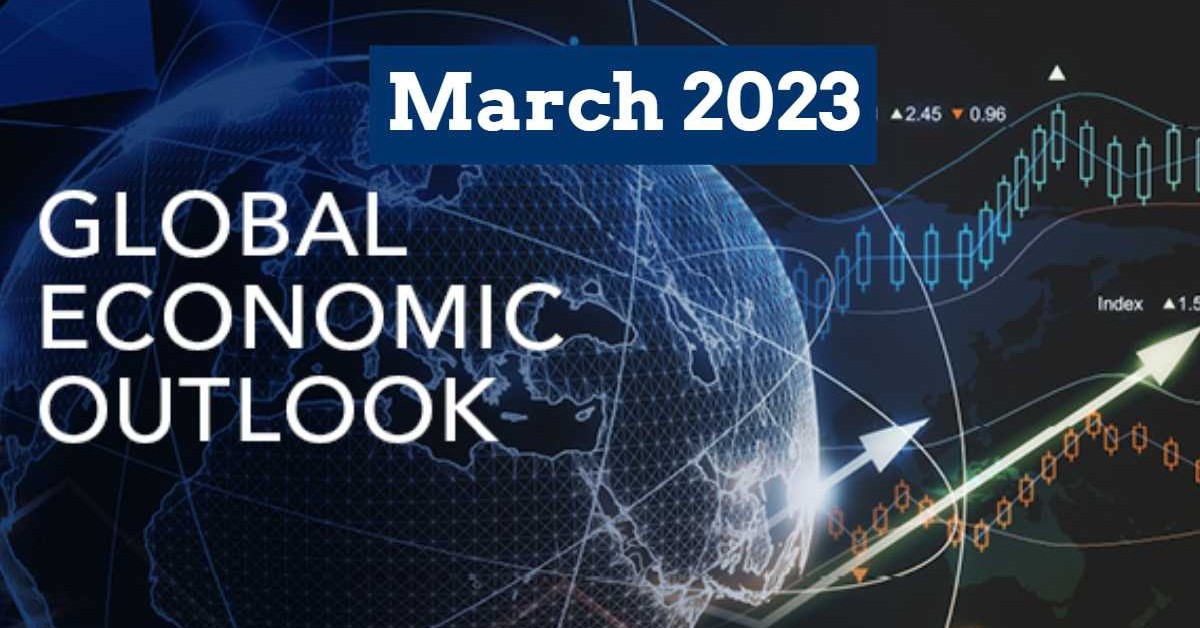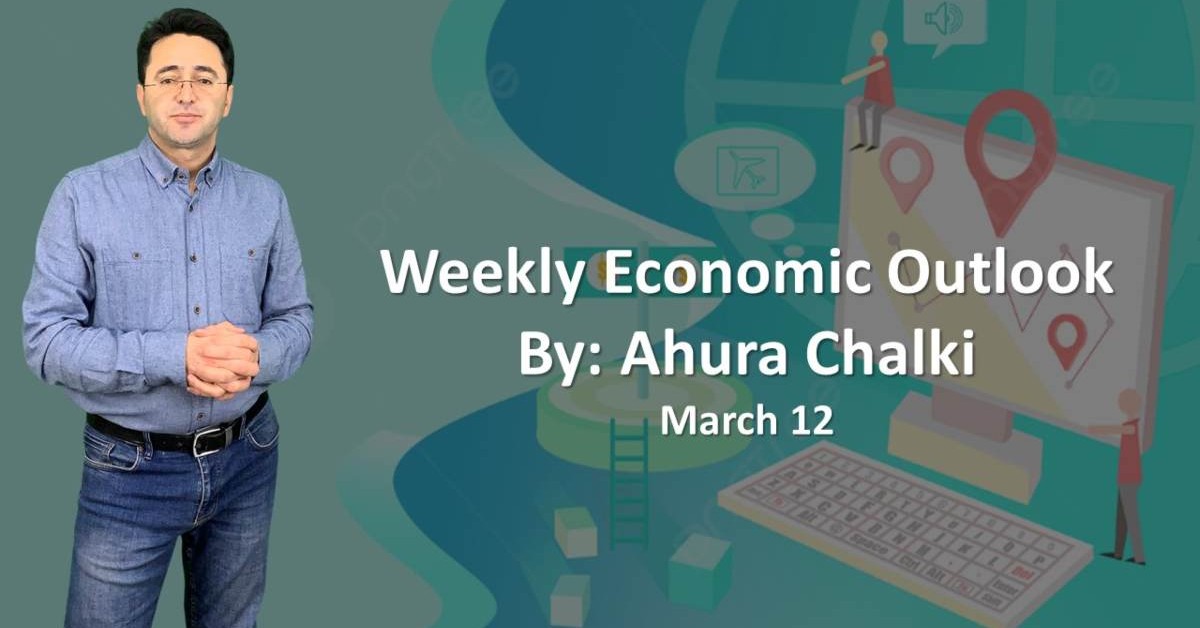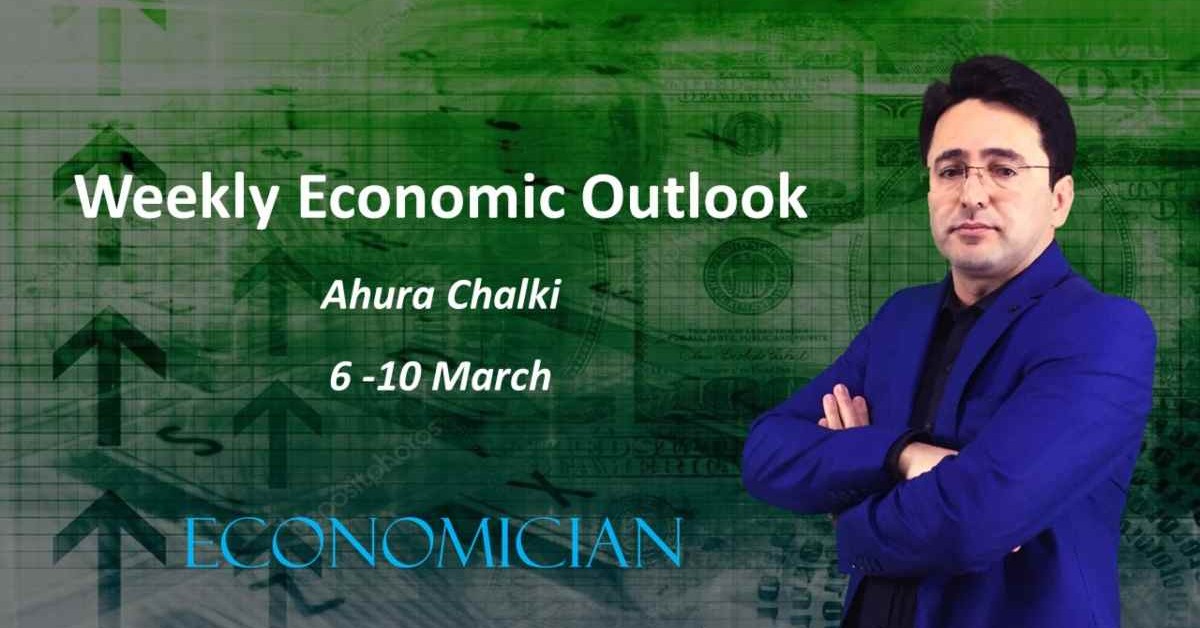Can the economy grow to contain inflation?
For many years, the inflation worries have been forgotten and even many have been suffering from lower inflation instead of higher. After the 2020 crisis, with starting the recovery pat in 2021, faster-growing demand than supply, with supply-chain disruptions and labor shortages, everything was ready to increase the prices.
As the year draws to a close, most central banks started tightening policies by decreasing or ending the bond purchases plans and starting or planning to start increasing the interest rates. Many analysts believe that economies in the most developed countries have reached a stage where they can grow on their own and supports can be reduced. With these overall outlooks, we can say that 2022 is the year that the global economy can grow with more than 4.5% GDP growth, and this growth can help inflation to decrease, especially if more banks tighten their monetary policies.
Here, we are going to look at the global economy in different parts of the world to see expectations specifically from their recovery, and then their effects on the global economy, stock markets, and currency exchanges. In this article, I have surveyed the world`s major economies from east to west from Japan, China, the European Union, the United Kingdom, and the United States, respectively.
Japan, Yen, and Nikkei-225
Outlook for the Japanese economy in 2022 is positive after the slight decline of economic growth in the third and fourth quarter, with lifting the COVID-19 restrictions, new government, and their great stimulus, most analysts are optimists about the year ahead.
One of the main events that we have to remember about that in 2021, which can affect the next year`s economy strongly, is prime Minister Kim Fumio Kishida and his party`s victory to retain its majority in the lower house of the Diet (parliament).
The Prime minister started his plans by promising the great stimulus, however, a bit later he has pivoted away from his predecessors’ “Abenomics” economic policy that included raising taxes, on the other hand, he will focus mostly on reducing inequality and reviving the economy before restoring fiscal balance. Just to remind, during his campaign, he promised that after some pressing economic policies, his administration will not charge the tax in the next ten years, instead, he proposed raising taxes on investment income for people with high incomes.
Anyway, on November 19, Kishida’s cabinet approved a larger-than-expected 55.7 trillion-yen fiscal stimulus package. And Japan`s parliament on Monday, December 20 enacted a record 36.0 trillion yen ($320 billion) supplementary budget for fiscal 2021, partially financing the government`s latest economic package.
According to this new stimulus plan, the government`s focus will be on funding for universities and the digitalization of rural areas, raising the semiconductor manufacturing capacity, wage growth, and tax breaks to encourage companies to raise wages. I need to mention that Wage growth in Japan was so less than in other economies, and with nominal wages today, it is still lower than they were in the late 1990s.
While the Japanese government upgraded its growth forecast for the domestic economy in fiscal 2022 to a real 3.2%, from the previously estimated 2.2%, the consensus expectation is 2.6%.
According to different estimates from private-sectors, the third-largest global economy is expected to reach a ¥556.8 trillion real GDP in the 2022 fiscal year. Also, the Bank of Japan expects, that inflation will be well below its 2% target for at least two more years. Therefore BoJ can continue its easy monetary policy settings, but increase the interest rate to -0,5% by year-end.
Given these estimates and economic expectations, we are expecting to see the Japanese Yen still a bit in a weaker position comparing its counterparts, which will help the domestic consumption increase and help the export also to increase by 5.5%, following expected growth of 11.4% in fiscal 2021. The growing expected economy is also supposed to help the Nikkei-225 to increase more in 2022 and prove itself as one of the best investment opportunities.
Our expectation for USDJPY is to stay well above 1.12 for 2022, and by the end of the year, we expect that Nikkei 225 to rise to 33,000 and the TOPIX to 2,200
Chinese Economy and Yuan!
2021 was the challenging year for the second global economy and the biggest global factory. Despite all challenges, China`s economy has increased, and still, for this year, analysts expect more bullish and see GDP growth in China accelerating to 5.5%. Analysts have also decreased their estimates for China’s 2021 GDP, down to 7.7% to 8%.
At the beginning of 2021, when officials put the GDP expectations for more than 8%, many analysts told it is so unreal, however with time passing, they proved that China is the country that can make unbelievable things done! Despite many challenges like regulations issues, housing market problems that could turn into a global crisis, Coronavirus new waves, a sharp rise in raw material prices, and a severe rise in fuel and transportation prices, this economic dragon continued to grow well. Therefore, for China`s economy, we can say that they returned more powerful from a mini-downturn.
The people Bank of China (PBOC), in 2021 cut the reserve requirement ratio for the second time, and in December 21 report, managed to cut the debt-to-GDP ratio by ten percentage points in 2021. These policies helped the industries and factories to access more loans.
And now, for 2022, still, we have many reasons to see the Chinese economy can reach its 5.5% GDP growth. With pausing in more hawkish policies that most central banks in other economies already have started, China will help its industries, especially the housing market with more reliefs and global demand that will help the country`s exports to stay strong in 2022.
Chinese economy for a short period in 2021 also had a power shortage, which was the reason for government aggressive policies against Australia and Coal imports from there. For the coming year, seems like they already have some alternative decisions for coal production and availability, with mines being restarted and electricity producers being allowed to raise prices to cover the rising input costs.
For 2022, and given the mentioned economic forecasts, estimates are about to see the Chinese Yuan within the current familiar levels with not many changes. We are expecting the government and central bank to keep their monopolization on the Forex market.
Eurozone - EUR & Stock Markets!
Recovery in the Eurozone was slower, but more stable compared with the US, UK, and China. Economic indicators started to have positive signals mostly from the second quarter and second half of 2021. Even if in the fourth quarter, rebound in COVID cases has added some uncertainty to the near-term outlook, but in the end, it did not cause a new round of restrictions, just some countries in Eurozone took some restrictive measures, however major economies decided to cope with the real situation.
Although consumer confidence surveys have softened overall in recent months still, the latest published economic data show that the block is doing well in general, and outlooks are positive for the near future. This positive outlook was the reason that the European Central Bank in its December meeting to move towards a less accommodative monetary policy, even if the taken steps were so small. Comparing ECB decisions with FED`s recent moves will tell us why Euro is in a weaker position against US Dollar.
According to the latest ECB`s announcement of the December meeting, European Central Bank with shifting towards less accommodative monetary policies decided to end the Pandemic Emergency Purchase Program (PEPP) in March 2022 by decreasing the level of purchases in the first Quarter of 2022. Therefore, PEPP purchases will be slightly below the €1.85 trillion purchase envelope.
Before starting PEPP, ECB had its regular Asset Purchases Program (APP). ECB made some changes in its APP as well. The ECB noted that net APP purchases will be €40 billion per month in the second quarter of 2022, €30 billion per month in Q3-2022, and after that, they will continue the €20 billion per month from October 2022 for as long as needed. Despite the great economic developments still, they have kept the chance of the possibility of returning to the PEPP program until at least the end of 2024, alive, but mentioning that if it will be necessary. In the end, have to mention that ECB had no change in its interest rate levels and other monetary policies, with any new targeted long-term refinancing operations.
Regarding economic activities and hope for return, European countries count on their domestic demands, mostly. It is expected that European consumers start buying and spending money in 2022, which will increase the demand level. On the other hand, with decreasing corona-virus concerns, the service sector including the tourism industry, especially in Italy, Portugal, and France can give new life to the economy of this block!
Considering 5.2% GDP growth in 2021, consensus expectations for 2022 is 4.3% GDP growth. Inflation is also expected to continue to grow to 3.2% in 2022, from 2.6% in 2021, before easing to 1.8% in 2023. Therefore, the expectation for returning the inflation below the 2% ECB`s target over the medium term, allows the European central bank to taper its bond purchases only gradually during 2022.
Given the mentioned economic outlook and estimates, we are expecting to see the Euro in the weaker position in 2022 as well. EURUSD started 2021 around 1.2300, but with USD return, and European weaker economic data, declined under 1.1200 in the last days of the year, before rebounding to 1.1300. We are expecting to see the same trend in 2022 as well, and the main driver will be the difference between Fed and ECB views on rates and inflation.
The ECB policy is more dovish, or we can say, they have a less hawkish tone comparing other major economies, excluding Japan. And most likely, ECB will retain its dovish policies. Inflation concern, compared to the United States is in the EU, which could lead the central bank to keep its dovish policy throughout 2022.
And the main question is, what will be the impact of these policies on the European currency and stock markets? Unlike 2021, for this year we are expecting to start the year with the weaker position in the beginning and end it in a stronger position. ECB policies will put the Euro under pressure and we can see it around 1.14 and less against US Dollar in the first half. However, since mentioned policies will help the European stock markets to grow stronger, therefore stronger economy slowly will help the currency as well and will end with higher levels at the end of this year.
About the stock markets, most of the European stock indices have increased during 2021 with hitting new records high, including German DAX, French CAC-40, STOXX Europe 600, and 50. Most of the bullish movements of European Stocks happened in the second half of 2021. And now, we are expecting to see the continuing of this up-trend in 2022 as well. However, we should not forget that global supply chain strains and rising costs can pressure company profits and will increase the final product cost and inflations.
2022 forecasts for European leading indices:
- German DAX: 15,600 - 20,200
- France CAC 40: 7200 - 7900
- EURO STOXX 50: 4,100 - 4,840
United Kingdom, Pound, and Footsie
The UK is one step ahead of other major economies. It was the economy that suffered the most in 2020 by a coronavirus in G7 countries. Also, the United Kingdom was the first country that had begun public vaccination and reopenings as its fast vaccination result. Later, the UK also was the first G7 member, which increased the rates before 2022 (15 Basis points to 0.25%). However, since the last month`s published data from the UK is a bit weaker than expectations, we are not waiting to see more than 50 bps of rate hikes in 2022. It will be less than market expectations for 90 bps, as well as FED`s actions. Therefore, same as Euro, Pound also should not have that many rooms against US dollars to increase, and we can see the pound soften versus the US dollar over time.
For a better understanding of what we are waiting to see in 2022, we can check the main scales and see the effects. As retail sales and industrial production eased in the past months, therefore it is normal to see a weaker GDP in the first months of next year. While indicators show that UK GDP is just 0.5% lower than pre-pandemic, it is expected that UK economic growth would slow from 6.9% in 2021 to 4.7% in 2022. One of the reasons that caused economic growth ease was the restriction measures that the UK had in different periods, therefore we can see some changes in the government approach in the last wave, but it will take time for the economy to return to normal.
And while economic growth is under question, increasing the energy price, production and supply chain disorders, and delays in raising interest rates by BoE, are reasons that probably we can see much higher inflations in 2022. Especially in the coming April, when Ofgem is planning to increase the price cap on household gas and electricity bills, the expected inflation will be about 6%, which is three times more than the BoE target. The industry will be the main victim of this 50% expected energy price increase. This decision will lead the economy to a “national crisis” situation with a fast increase in wholesale costs. It cannot be positive news for the UK stock markets, including FTSE100, and will increase the pressure on the Sterling, too.
Despite all these mentioned concerns, the labor market has been increasing well, even with ending the furlough scheme at the end of September. At the current situation, and at the beginning of 2022, we can see that the unemployment level can decrease to 4%, and return to the pre-pandemic levels in a very short term, with less than 1.4 million unemployed. The employment rate before the pandemic crisis was about 32.5M (including self-employment). With this positive news about the labor market, still, economists at HSBC estimate UK households will suffer a 1.7% drop in real income levels this year, which is mostly the effect of higher inflation levels.
Cable is expected to increase slightly in the first quarter even up to 1.39. However, with ongoing changes and spreads in banking rates, it is likely to see the sterling under 1.30 against US Dollar by year-end. And about the UK Stock markets, it cannot be that brilliant year for British markets in general. As an investor, UK Stocks will be the last choice, between the G7 members to invest!
The United States, USD & Wall Street
The financial crisis of 2007–2008 had a good lesson for policymakers in the United States, and probably that was the reason why they had a much better reaction to the 2020 crises. United States reaction and monetary support were far more than expected. Different stimulus packages during president Trump, and later under President Biden`s Administrations, with strong supports from Federal Reserve, helped the US economy to have a "V" shape recovery, with even a steep ascending slope.
Overall expectations, not only for 2022, even for 2023, is to see continuing of this great recovery. And with ongoing Federal Reserve policies, will put the US dollar in a much stronger position among G10 currencies and can hold the bulls running in Wall Street.
As we saw in the latest FED monetary policy decisions, Federal Reserve accelerated its tapering of the bond purchases. Also, its published minutes of the December meeting tell us that now, we can see more policymakers are signaling the likelihood of earlier and faster rate hikes than previously expects. This is while other central banks, as I mentioned earlier, in Japan, China, the EU, and the UK might not fully deliver on their rate hike expectations. About the emerging currencies, always, they have been sensitive to rising US bond yields. And mentioned policies and changes can put the US dollar in a much stronger position against its crosses.
Given strong economic data and higher inflation, the market now pricing on faster increasing the interest rates, with at least two rate hikes in the second and fourth quarters and 25 bp each time. While for 2023 many analysts waiting to see another 75 bp rate hike, the possibility of first increasing the rates on the second quarter of this year also getting even more.
Anyway, besides the central bank`s policies and great economic data from different sectors, we have some concerns that they can change the game and are very important. About the improving numbers have to mention about the unemployment level that eased to 3.9% with increasing retail sales, industrial and manufacturing productions.
On the other hand, the main concern in 2022 is inflation. Inflation quickened further, as expected, in November and December. In November, CPI inflation increased to 6.8% year-over-year, the fastest growth rate since 1982, and the core CPI raised 4.9% YoY. The continuing increasing inflation, along with the expected rate rise, could also slow down the US equity markets` bulls. And it means that market risk can increase even more and lift the USD safe-haven demand. Stronger than expected currency also in the next step will decrease the exports.
Inflation is not the only concern. 2021 fast recovery showed that supply chains disorders can even end factory closures. Even if the Omicron variant of coronavirus is not as dangerous as it was expected to be, however, it is not the last variant of this virus, and coronavirus risk is still there and it is not over. We should not forget about the Delta variant. Earlier in 2021, the Delta variant piled additional pressure on supply chains by getting workers sick and making them scared to go to work. Therefore, we still have some other risks, like labor shortage and as a reason, closures of some production and service sectors.
And finally, after providing more than 6 trillion US dollars in Covid relief during the first two years of the pandemic, federal support will be much less in 2022. Even though if FED officials believe that fast economic recovery and more money circulation in the economy, will compensate for the lack of government liquidity support, but the question is, what if FED makes a mistake in its estimates and outlooks? In fact, we do not know that how much of this robust expansion is due to financial support and how much from better economic recovery. Therefore, we have other risks as well to think about, less support and the possibility of mistakes in the Federal Reserve`s economic outlook.
For 2022, while we are waiting for weaker Euro, Pound, and other European currencies, US economic outlook is bright and will support the US currency. Therefore, higher rates for the US dollar index (DXY) in 2022 are so likely. The Consensus expectation is about a 5% gain for the USD index.
The S&P 500 rose 29% in 2019, 16% in 2020 and another 27% in 2021. And now for 2022, even if we are expecting to see more gains, it will not be as big as the past three years, same as the GDP growth expectations. IHS Markit expects 4.3% GDP growth, Trust and LPL Financial forecast 4% to 4.5% growth for 2022, Morgan Stanly expects 4.6%, and Wells Fargo expects 4.5%. All of them decreased their earlier expectations.
On the inflation front and while market participants waiting for a bit higher inflation in the first half of the year, mostly because of shipping disruptions, supply-chain troubles, and energy price increases, but it is expected to slow down in the second half of the year. The inflation increase in 2021 was dramatic. The Consumer Price Index (CPI), was up 6.8% year over year in November, the largest increase in almost four decades. In 2022 FED is expecting that inflation to back to 2.6%, from 5.3% average PCE inflation in 2021.
Considering all mentioned estimates, S&P 500 growth expectations are between 9%- 13% in 2022, according to different estimates from different banks and financial institutes. It is well above the 10-year average of 5% but much lower than the past three years. And generally, Industrials, consumer discretionary, and energy sectors can be the best share to invest in 2022.
